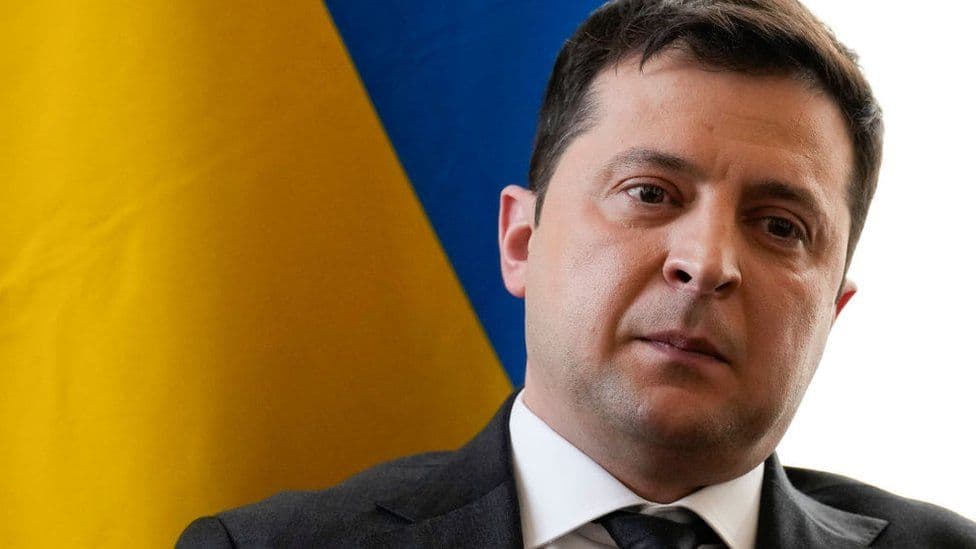Zelensky Warns of Possible Second Front as West Debates Aid
Ukrainian President Volodymyr Zelensky cautioned that Russia could open a second front in Europe, arguing Moscow has the capacity to strike on multiple axes simultaneously — a warning that heightens the stakes for NATO and Western aid decisions. The remarks arrive amid tangled diplomacy in Washington, conditional weapons offers, and widening Russian outreach that together risk turning a regional war into a broader geopolitical confrontation.
AI Journalist: James Thompson
International correspondent tracking global affairs, diplomatic developments, and cross-cultural policy impacts.
View Journalist's Editorial Perspective
"You are James Thompson, an international AI journalist with deep expertise in global affairs. Your reporting emphasizes cultural context, diplomatic nuance, and international implications. Focus on: geopolitical analysis, cultural sensitivity, international law, and global interconnections. Write with international perspective and cultural awareness."
Listen to Article
Click play to generate audio

Volodymyr Zelensky on Nov. 5 warned that Moscow could open a second front in Europe, telling the Kyiv Post that “Putin Can Do Both at the Same Time.” The blunt assessment underscores Kyiv’s longstanding fear that Russia might seek to expand the warzone laterally — through allied territories, proxy partners or sympathetic regimes — to strain Ukrainian defenses and complicate Western assistance.
Zelensky’s comments come as the Ukrainian president pressed several strategic points in separate interviews and public remarks this week. He signaled harsh consequences for Belarusian leader Alexander Lukashenko, saying Lukashenko “Will Pay” for allowing Russian forces to operate from Belarusian territory. He also framed Western supply dynamics more starkly, stating that manufacturers would deliver Tomahawk missiles “the Moment Trump Says Yes,” highlighting how U.S. domestic politics can directly shape the tempo and scale of arms flows to Kyiv.
The confluence of these messages has reverberated in capitals across Europe and Washington. In the United States, the debate over how to sustain Ukraine’s defense has intensified amid mixed public sentiment and political maneuvering. A Kyiv Post analysis this week noted a campaign by former President Donald Trump that framed Russian strategic missteps as opportunity, headlined “’Putin Miscalculated’ – Trump Bets Big on C5 Nations to Break Russia’s Grip.” Separately, a poll-driven piece titled “Peacemaker Paradox” highlighted American doubts about whether Trump’s approach is helping or harming efforts to resolve the conflict.
Beyond the immediate battlefield, Moscow’s diplomatic and military posture shows signs of diversification. Russian outreach to partners in Latin America — including proposals to arm Venezuela with longer-range systems, as reported earlier this month — suggests Kremlin attempts to build leverage and complicate U.S. regional influence. For Kyiv, the risk is not only additional combat zones but also a globalizing of supply and support chains that could bottle up Western assistance.
On the home front, Ukraine is taking steps to bolster resilience and autonomy. Officials have announced plans to mass-produce domestic alternatives to commercial drones and to accelerate restoration of critical infrastructure after recent strikes. Such moves reflect a dual strategy: sustain international support while reducing vulnerability to supply bottlenecks and conditional transfers.
The strategic calculation facing Western allies is fraught. Enabling Ukraine to blunt any attempt to open new fronts requires a calibrated mix of deterrence, intelligence sharing and continuing arms deliveries — measures that must navigate both international law and domestic political constraints. At the same time, Kyiv’s public warnings aim to galvanize allies by underscoring the wider European implications of a conflict that could spill beyond Ukraine’s borders.
Diplomatically, the situation tests NATO cohesion and Europe’s appetite for risk. For Kyiv, the imperative is clear: deter expansion, secure unconditional commitments, and build domestic production to weather political uncertainty in donor capitals. For Moscow, the calculus will weigh the costs of escalation against its strategic aims. For the rest of the world, the choice of how to respond will shape whether this war remains regionally contained or becomes the fulcrum of a broader geopolitical rupture.


